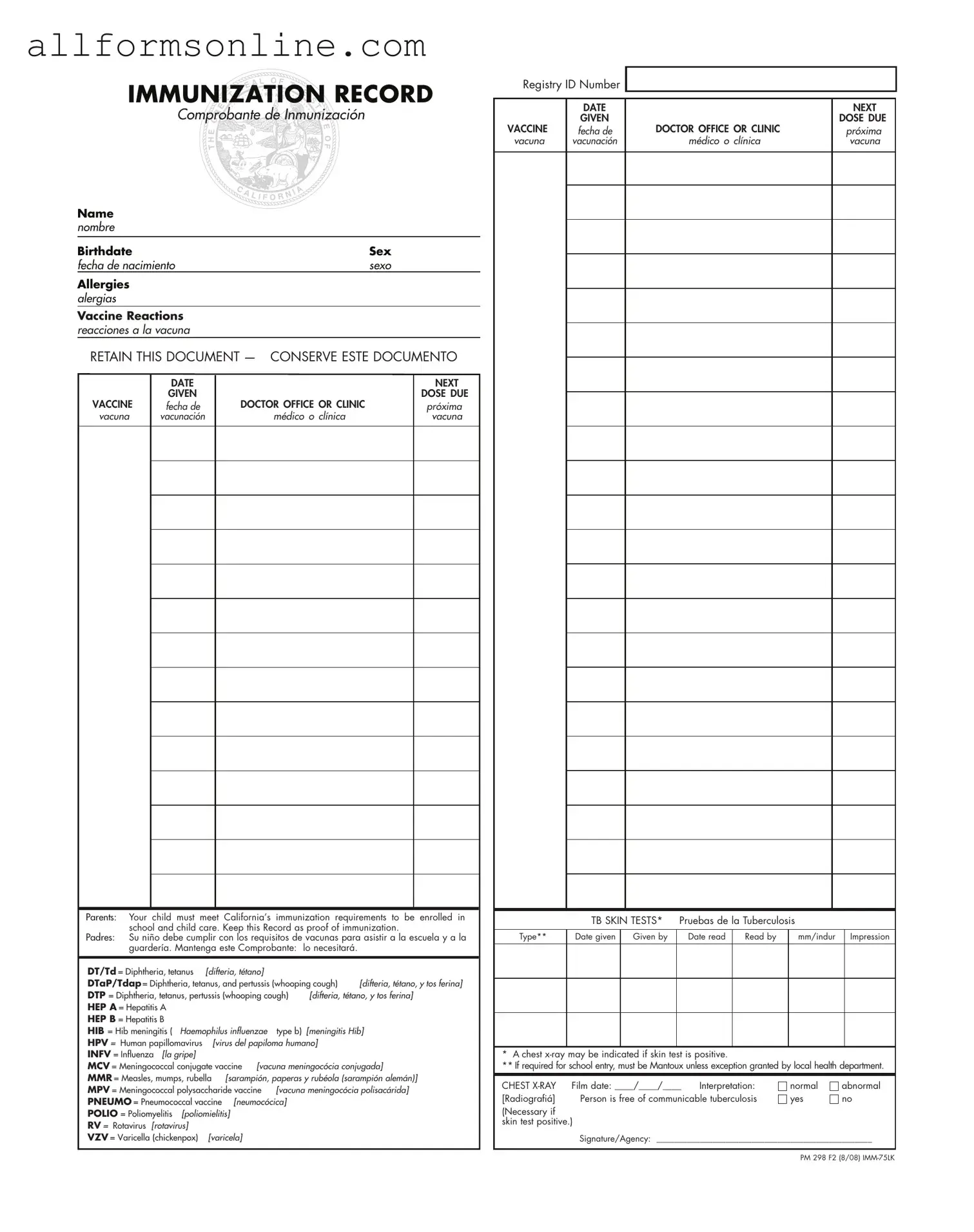What is the purpose of the Immunization Record form?
The Immunization Record form serves as an official document that tracks a child's vaccinations. It is essential for parents to maintain this record as proof of immunization, which is often required for school and childcare enrollment in California. Keeping this form ensures that parents can demonstrate compliance with immunization requirements.
What information is included on the Immunization Record?
The form contains several key pieces of information, including the child's name, birthdate, sex, and any allergies they may have. Additionally, it lists the vaccines received, reactions to those vaccines, and dates for future doses. This comprehensive information helps healthcare providers and schools verify a child's immunization status.
Why is it important to keep this document?
Maintaining the Immunization Record is crucial because it provides proof that a child has received the necessary vaccinations. Schools and childcare facilities require this documentation to ensure the safety and health of all children. Without it, a child may be denied enrollment or face exclusion during outbreaks of vaccine-preventable diseases.
What should parents do if they lose the Immunization Record?
If the Immunization Record is lost, parents should contact their child's healthcare provider or the clinic where the vaccinations were administered. Most healthcare providers maintain records of immunizations and can issue a new copy. Alternatively, parents may check state immunization registries, which often store vaccination records electronically.
What vaccines are typically included in the Immunization Record?
The Immunization Record includes a variety of vaccines, such as DTaP, MMR, polio, and influenza, among others. Each vaccine is listed with its corresponding dates and any reactions the child may have experienced. This ensures that parents have a complete overview of their child's immunization history.
What are the consequences of not meeting immunization requirements?
Failure to meet immunization requirements can lead to significant consequences for children. They may be unable to enroll in school or childcare, and during outbreaks of vaccine-preventable diseases, unvaccinated children may be excluded from attendance to protect public health. Compliance is essential for both individual and community safety.
What should parents do if their child has an adverse reaction to a vaccine?
If a child experiences an adverse reaction to a vaccine, parents should seek medical attention immediately. It is also important to report the reaction to the healthcare provider who administered the vaccine. This helps ensure that the child's medical history is accurately recorded and that any necessary precautions are taken for future vaccinations.
How can parents ensure their child stays up-to-date on vaccinations?
To keep a child up-to-date on vaccinations, parents should maintain regular appointments with their healthcare provider. Creating a schedule based on the recommended immunization timeline can help. Additionally, parents should use the Immunization Record to track upcoming doses and ensure that no vaccinations are missed.
What is the TB skin test, and why is it included in the form?
The TB skin test is a screening tool used to detect whether someone has been exposed to the tuberculosis bacteria. It is included in the Immunization Record form because some schools may require this test for entry. If the test result is positive, further evaluation, such as a chest x-ray, may be necessary to determine if the individual is free of communicable tuberculosis.
What should be done if a child's immunization record indicates a missing vaccine?
If the Immunization Record indicates that a vaccine is missing, parents should consult with their healthcare provider to discuss the best course of action. The provider can assess the child's vaccination history and recommend the necessary vaccines to ensure the child is fully immunized according to state requirements.
